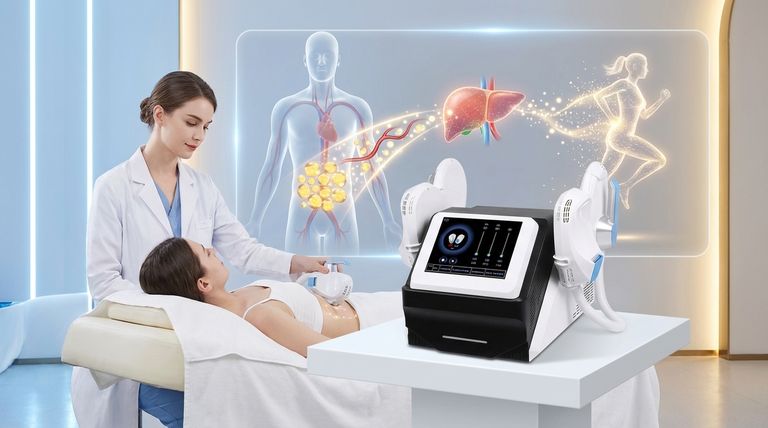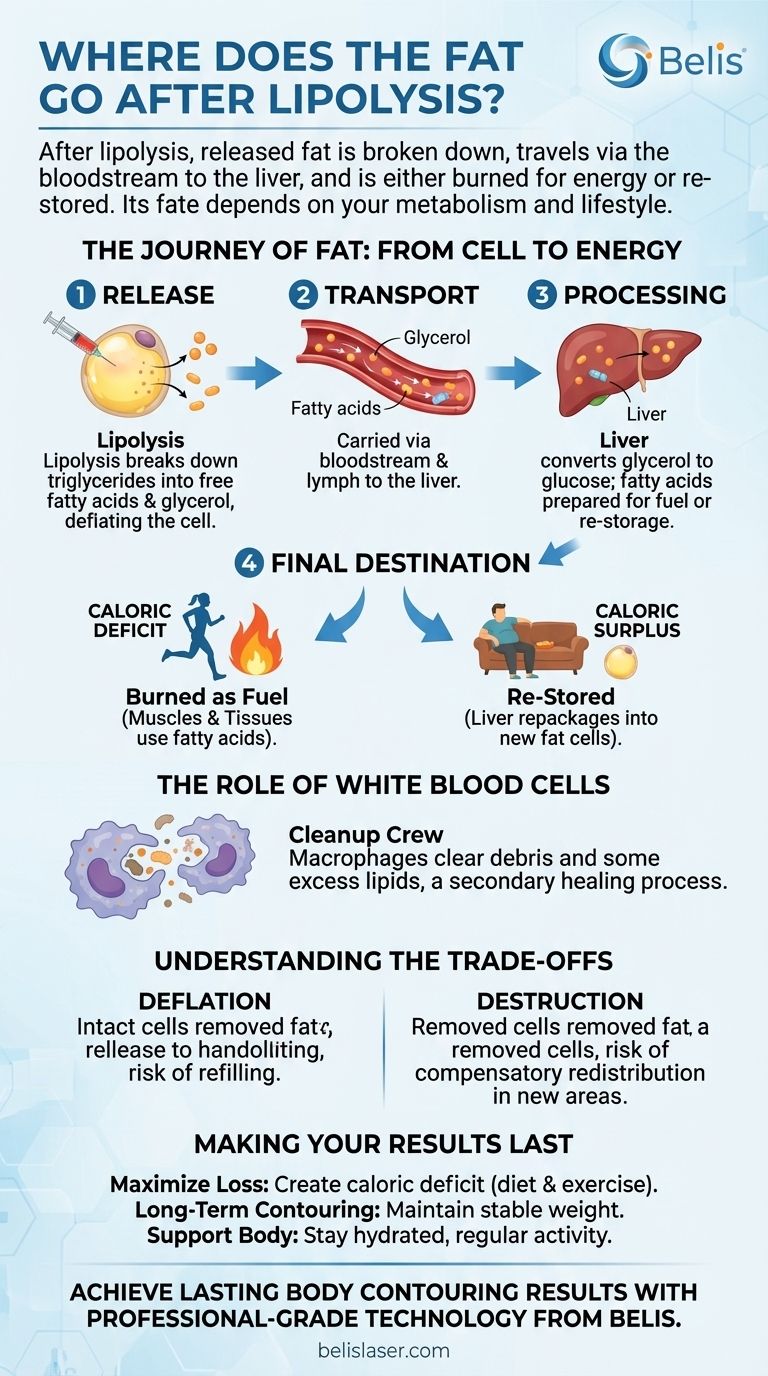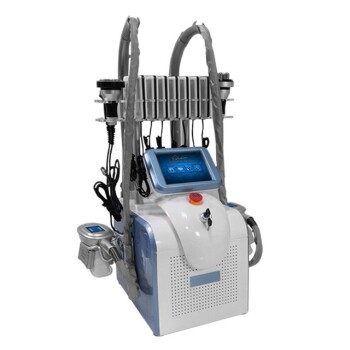In short, after lipolysis, the released fat is broken down, enters your bloodstream, and is transported to your liver. From there, it is either converted into energy and burned as fuel by your muscles and other tissues or, if unused, is re-stored by the body.
The fat released during lipolysis does not simply vanish. It is released into your body as fuel, and its ultimate destination—either burned for energy or re-stored—is determined by your overall metabolic state and lifestyle choices.

The Journey of Fat: From Cell to Energy
To understand what happens to fat after a lipolysis procedure, it's best to think of it as a metabolic journey with several distinct steps. The procedure initiates the first step, but your body's natural systems handle the rest.
Step 1: The Release from the Fat Cell
Lipolysis, whether induced by lasers, injections, or other technologies, targets adipocytes (fat cells). These procedures cause the triglycerides stored within the cell to break down into their core components: free fatty acids and glycerol.
This process makes the fat cell's membrane permeable, allowing these smaller components to leak out into the interstitial fluid, the space between cells. The fat cell itself isn't necessarily destroyed; it's effectively "deflated," becoming smaller.
Step 2: Transport via Blood and Lymph
Once released, the fatty acids and glycerol are picked up by your body's transportation networks.
The water-soluble glycerol is absorbed into your bloodstream and travels to your liver. The fatty acids bind to a protein called albumin, which acts as a shuttle, carrying them through the bloodstream as well.
Step 3: Processing by the Liver
The liver is the central processing hub. When the glycerol and fatty acids arrive, the liver metabolizes them.
Glycerol can be converted into glucose, providing a direct source of energy for your body. The fatty acids can also be used by the liver for energy or prepared for use by other tissues.
Step 4: Use as Fuel or Re-Storage
This is the most critical step and the one you have the most control over. The fatty acids transported in your blood are now available energy for your muscles and other organs.
If you are in a caloric deficit (burning more calories than you consume), your body will eagerly use these free fatty acids as fuel. Physical activity after a procedure can directly encourage this process.
However, if you are in a caloric surplus, your body has no immediate need for this extra fuel. The liver will repackage the fatty acids back into triglycerides, which are then transported and stored in other available fat cells, potentially even the same ones that were just deflated.
The Role of White Blood Cells
You may hear that white blood cells "destroy" or "eat" the fat. This is a simplification of a secondary, but important, part of the process.
The Cleanup Crew
Following a lipolysis treatment, your body initiates a mild inflammatory response to clean up the area. Macrophages, a type of white blood cell, act as scavengers.
They clear the area of cellular debris and engulf some of the excess lipids that have been released into the tissue. This is part of the body's natural healing and cleanup function.
Not the Primary Pathway
While this cellular cleanup is crucial for healing, it is not the primary mechanism for eliminating the fat's energy content. The metabolic pathway—transport to the liver and use as fuel—is what truly "gets rid of" the fat.
Understanding the Trade-offs
The distinction between deflating a fat cell and destroying it has significant long-term implications.
The Risk of Refilling
Procedures that only "deflate" fat cells leave the cell intact. This means the cell has the capacity to refill with fat if you gain weight in the future. The results are highly dependent on maintaining a stable weight through diet and exercise.
The Risk of Redistribution
Procedures that permanently destroy fat cells (like cryolipolysis or surgical liposuction) remove them from the treated area for good. However, this does not make you immune to weight gain.
If you consume excess calories, your body will still create and store fat, but it will do so in the remaining fat cells in other areas of your body. This can sometimes lead to fat accumulation in new, potentially undesirable locations, a phenomenon known as compensatory fat deposition.
Making Your Results Last
Understanding this biological process is the key to achieving a lasting outcome. Your actions after the procedure are as important as the procedure itself.
- If your primary focus is maximizing fat loss: Create a consistent energy deficit through nutrition and exercise, especially in the days and weeks following treatment, to ensure the released fatty acids are burned as fuel.
- If your primary focus is long-term body contouring: Recognize that no procedure is a substitute for a healthy lifestyle; whether cells are deflated or destroyed, maintaining a stable weight is critical to preserving your results.
- If you want to support your body's natural process: Stay well-hydrated and engage in regular physical activity to promote healthy circulation, lymphatic drainage, and energy expenditure.
By viewing lipolysis as the start of a metabolic process, you empower yourself to influence the final result.
Summary Table:
| Stage | Process | Key Outcome |
|---|---|---|
| 1. Release | Triglycerides break down into fatty acids & glycerol. | Fat cell is "deflated." |
| 2. Transport | Fatty acids & glycerol enter bloodstream via albumin & lymph. | Fat is circulated for processing. |
| 3. Processing | Liver metabolizes components for energy or storage. | Fat is prepared for final use. |
| 4. Final Destination | Fat is burned as fuel (in a deficit) or re-stored (in a surplus). | Outcome depends on lifestyle & metabolism. |
Achieve lasting body contouring results with professional-grade technology from BELIS.
Understanding the science behind fat removal is the first step. The next is choosing the right technology to ensure effective, safe treatments for your clients. BELIS specializes in advanced medical aesthetic equipment designed for clinics and premium salons, helping you deliver predictable, satisfying outcomes.
Let our expertise empower your practice. Contact our specialists today to discover the ideal lipolysis solutions for your business needs.
Visual Guide

Related Products
- EMSlim Body Sculpting Machine EMS Body Slimming Machine
- Cryolipolysis Fat Freezing Machine Ultrasonic Cavitation Fat Reducing Device
- Ultrasonic Cavitation Radiofrecuency Machine for Body Slimming
- EMSlim RG Laser Body Sculpting and Slimming Machine
- Cryolipolysis Fat Freezing Machine and Ultrasonic Cavitation Device
People Also Ask
- Does EMS actually work for weight loss? A Realistic Look at Muscle Building and Metabolism
- What are the side effects of ultrasound fat reduction? Minimize Risks for Safe Body Contouring
- How many sessions of ultrasonic liposuction are needed? Achieve Optimal Body Contouring
- Do ultrasonic weight loss machines work? The Truth About Non-Invasive Body Contouring
- Does Emslim really work? Yes, for Sculpting Muscle, Not Just Burning Fat



















